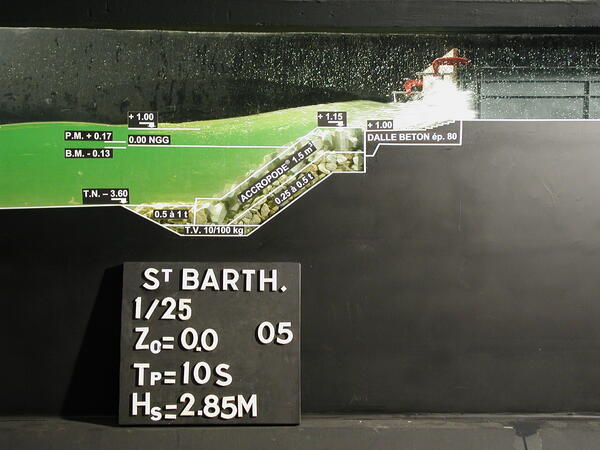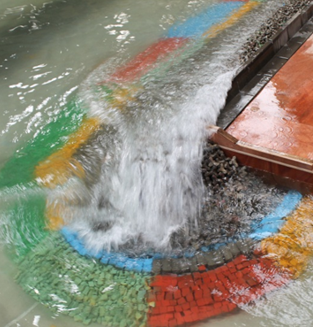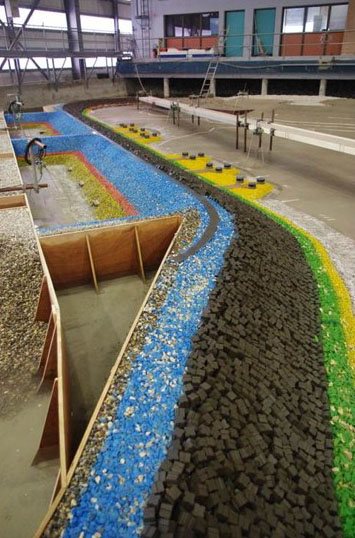
Stability of rubble-mound breakwaters under wave attack
Ensuring the stability of breakwaters with rockfill or artificial armour facings exposed to waves in the coastal zone.
Physical scale modelling is used to study the stability of rubble-mound structures that are exposed to waves, by reproducing the specific hydraulic phenomena that arise as the waves approach the structure and once they reach it: run-up, run-down, overtopping, internal pressures, reflection, transmission, and absorption.
The structure’s response to these hydraulic forces will depend on its type, its geometry and the methods used to build it.
Fluid-structure interaction in the particular case of port and maritime structures is hence a complex matter on two counts: firstly the singular nature of the highly turbulent flows in the coastal zone (wave-breaking processes), and secondly the complexity of the structures themselves, being formed of granular materials, with a porous body and unbonded components, and featuring crest blocks. Physical scale models are capable of taking this two-fold complexity into account.
The storm conditions reproduced on the model are gradually strengthened, providing a means of observing the progression of damage and quantifying it by counting the blocks that shift or fall or by measuring changes to slope profiles.
The study methodology adopted during the design of these maritime structures usually involves two types of model, which are used in succession:
- two-dimensional (2D) models using a wave flume
- three-imensional (3D) models using a wave tank.
The wave flume (2D)
Tests are conducted in a wave flume to check the preliminary sizing of the standard sections of the structure that are subject to frontal waves, in terms of the stability of the exposed materials in the armour facing, the underlayer, the toe mound, the front and rear slopes, and the crest works.

These tests also provide a means of visualising and measuring wave overtopping over the structure.
They are conducted by transforming the wave over a characteristic bed profile next to the trunk sections being considered.
The wave tank (3D)
Following on from the 2D wave flume, the 3D wave tank is used to round off the analyses of the structure in question:
- exposure of breakwaters to waves from different directions
- the role of bathymetry in wave transformation (energy concentration, breaking intensity, effect of the presence of an approach channel)
- stability in specific parts of structures that are considered to be more fragile than the standard sections, such as breakwater roundheads, curved sections, bends, transition zones between different categories of armour unit or rockfill or between different types of construction (as in the case of a rockfill breakwater extended by a vertical-wall caisson breakwater)
- wave overtopping and the corresponding volumes in the various sectors of the structures
- wave disturbance inside the harbour basin, when this is modelled.


